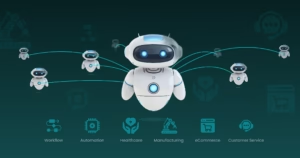How to Create Reliable Conversational AI Agents Using Parlant?
Conversational AI is no longer a futuristic vision—it has become an everyday reality. From customer support chatbots to AI-driven personal assistants, businesses and developers are seeking reliable ways to build intelligent, context-aware, and scalable conversational agents. Among the emerging platforms in this space, Parlant has gained attention for its robust framework, flexibility, and reliability in powering conversational AI applications.
In this article, we will explore how to create reliable conversational AI agents using Parlant, step by step. We’ll cover its architecture, features, integration process, best practices, challenges, and real-world applications. By the end, you’ll have a complete roadmap to build production-ready conversational AI solutions with Parlant.
1. Understanding Parlant: An Overview
Parlant is a conversational AI development framework designed to simplify the creation, deployment, and management of AI-driven agents. Unlike traditional rule-based bots, Parlant emphasizes scalability, adaptability, and reliability, making it an ideal choice for enterprises and startups alike.
Key Features of Parlant
-
Multi-turn conversation handling: Keeps track of context across multiple interactions.
-
Hybrid intelligence: Combines rule-based logic with large language model (LLM) capabilities.
-
Integrations: Works with APIs, databases, and third-party tools seamlessly.
-
Low-latency performance: Optimized for real-time conversational needs.
-
Custom workflows: Tailored pipelines for industries like healthcare, finance, and e-commerce.
In short, Parlant allows developers to focus on conversation design and reliability without reinventing the technical infrastructure.
2. Why Reliability Matters in Conversational AI
Reliability in conversational AI means consistency, accuracy, and robustness. Users expect AI agents to:
-
Provide correct information.
-
Handle errors gracefully.
-
Maintain conversation continuity.
-
Work across different environments (web, mobile, voice assistants).
Unreliable agents lead to frustrated users, damaged brand reputation, and business loss. Parlant’s architecture addresses this by embedding context management, fallback strategies, and monitoring tools into its core.
3. The Architecture of Parlant Agents
Before building, let’s break down how Parlant structures conversational AI agents.
a) Input Processing
-
Accepts inputs from text, voice, or API requests.
-
Uses Natural Language Understanding (NLU) to identify intent, entities, and sentiment.
b) Dialogue Management
-
Maintains conversation context.
-
Chooses the next action based on rules, ML models, or hybrid strategies.
c) Response Generation
-
Generates dynamic responses via templates, LLM-based outputs, or knowledge bases.
d) Action Layer
-
Executes API calls, retrieves database records, or triggers workflows.
e) Monitoring & Feedback
-
Logs conversations, measures accuracy, and adapts over time.
This modular design ensures flexibility while prioritizing reliability and scalability.
4. Step-by-Step Guide: Building a Reliable Conversational AI Agent with Parlant
Let’s walk through the practical process.
Step 1: Define Use Case & Goals
Ask: What problem will the agent solve?
Examples:
-
Customer support for e-commerce.
-
Appointment scheduling for healthcare.
-
Banking virtual assistant.
Clear objectives help define intents, entities, and workflows.
Step 2: Set Up Parlant Environment
-
Install Parlant SDK or access its cloud platform.
-
Configure project settings.
-
Connect to APIs, databases, or knowledge sources.
For developers, Parlant provides CLI tools, cloud dashboards, and integration kits.
Step 3: Design Intents & Entities
-
Intents: What the user wants (e.g., “Check order status”).
-
Entities: Specific data extracted (e.g., order ID, date, customer name).
In Parlant, you can define intents using a mix of training phrases and semantic rules, ensuring both flexibility and precision.
Step 4: Implement Dialogue Management
This is where Parlant shines.
-
Use state tracking to maintain conversation flow.
-
Define conditional paths for different scenarios.
-
Enable fallback handling for uncertain queries.
For example:
If a user asks, “Where is my package?” and the order ID is missing, the bot prompts:
“Could you please provide your order ID so I can check?”
Step 5: Train & Fine-Tune NLU Models
-
Use Parlant’s NLU engine with pre-trained embeddings.
-
Fine-tune using domain-specific data.
-
Add edge cases to reduce misclassifications.
Reliability improves when models are regularly retrained with real user data.
Step 6: Integrate Knowledge Sources
Reliable AI agents must access accurate, real-time data.
-
Connect to CRM systems for customer records.
-
Integrate with product databases for availability and pricing.
-
Use external APIs (e.g., weather, payment, shipping).
Parlant supports connectors and RESTful APIs for easy integration.
Step 7: Add Personalization & Context Retention
-
Store user preferences (e.g., language, purchase history).
-
Enable long-term memory to continue conversations seamlessly.
Example:
If a user says, “Book me the same doctor I saw last time,” Parlant recalls past interactions to fulfill the request.
Step 8: Test for Reliability
-
Perform unit tests for each intent.
-
Simulate edge cases (misspellings, vague queries, slang).
-
Use load testing for performance under high traffic.
Parlant provides simulation environments where developers can test multiple user journeys before going live.
Step 9: Deploy to Channels
Parlant agents can be deployed on:
-
Websites & mobile apps.
-
Messaging apps (WhatsApp, Slack, Telegram).
-
Voice platforms (Alexa, Google Assistant).
Multi-channel support ensures consistent experiences.
Step 10: Monitor, Optimize & Scale
Reliability doesn’t end at launch.
-
Monitor metrics: accuracy, drop-off rate, resolution time.
-
Collect user feedback.
-
Continuously retrain models and update workflows.
Parlant includes real-time analytics dashboards for continuous improvement.
5. Best Practices for Building Reliable Agents in Parlant
-
Start small, scale gradually – focus on core use cases before expanding.
-
Design for errors – build fallback responses that guide users instead of confusing them.
-
Keep human-in-the-loop – escalate complex cases to human agents.
-
Ensure compliance & security – especially in healthcare, finance, and legal domains.
-
Optimize latency – quick responses improve user trust.
-
Regularly update knowledge bases – outdated answers reduce reliability.
6. Common Challenges & How Parlant Solves Them
| Challenge | How Parlant Helps |
|---|---|
| Misunderstanding user intent | Hybrid NLU models with contextual training. |
| Context loss in long conversations | Built-in conversation memory. |
| Integration difficulties | Pre-built connectors & REST API support. |
| High latency responses | Optimized inference engine. |
| Scalability under load | Cloud-native, elastic infrastructure. |
7. Real-World Use Cases of Parlant Agents
-
E-commerce: Personalized shopping assistants recommending products.
-
Healthcare: Appointment booking, symptom checkers, telehealth support.
-
Banking & Finance: Balance checks, fraud alerts, loan guidance.
-
Education: AI tutors answering student queries.
-
Travel & Hospitality: Virtual concierges helping with bookings and itineraries.
Each use case requires reliability, accuracy, and personalization, which Parlant delivers.
8. The Future of Conversational AI with Parlant
As conversational AI moves toward autonomous agents capable of handling complex tasks, Parlant is positioning itself as a leader in scalable, enterprise-grade solutions. The future will see:
-
Deeper multi-agent collaboration.
-
Integration with AI planning systems.
-
More emotionally intelligent responses.
-
Increased focus on ethical AI practices.
By investing in reliability today, businesses can prepare for these advancements.
9. Conclusion
Creating reliable conversational AI agents is both an art and a science. With platforms like Parlant, the process becomes structured, efficient, and scalable. Reliability comes from careful intent design, robust context management, real-time integrations, thorough testing, and ongoing monitoring.
Whether you’re a startup experimenting with AI assistants or an enterprise deploying mission-critical customer service bots, Parlant provides the tools and infrastructure to succeed. By following the steps outlined above, you can create conversational agents that not only talk—but truly understand, assist, and build trust with users.
For quick updates, follow our whatsapp –https://whatsapp.com/channel/0029VbAabEC11ulGy0ZwRi3j
https://bitsofall.com/https-yourdomain-com-google-gemini-in-chrome-future-of-ai-powered-browsing/
https://bitsofall.com/top-15-model-context-protocol-mcp-servers-for-frontend-developers-2025/
MIT Researchers Made AI 64× Better at Planning — Reaching 94% Valid Plans with PDDL-INSTRUCT
An Internet of AI Agents? Coral Protocol Introduces Coral v1








